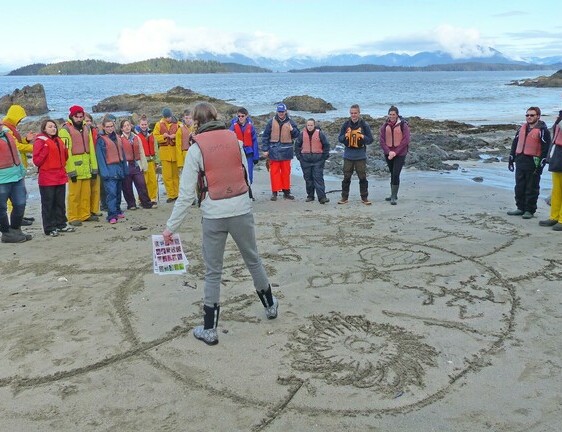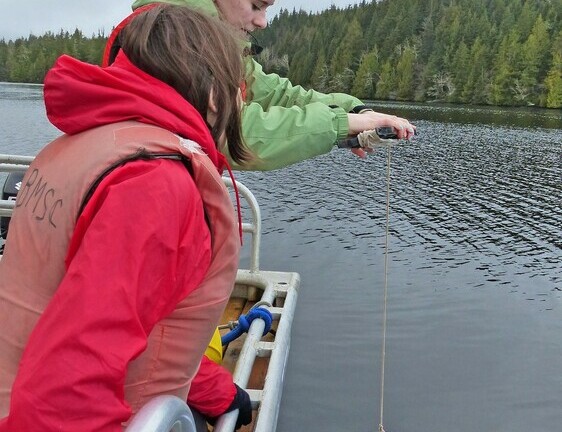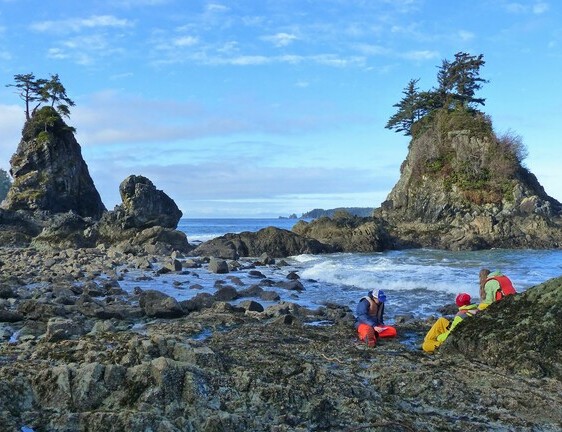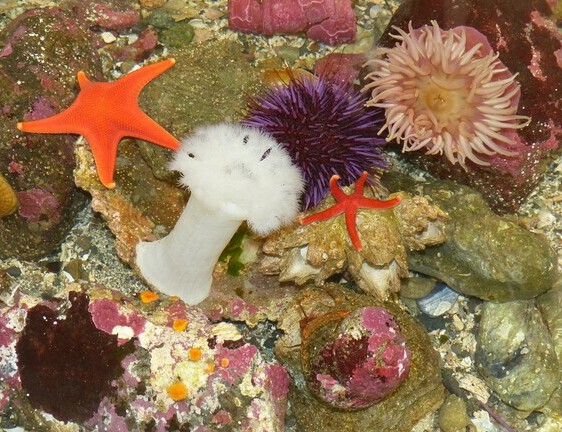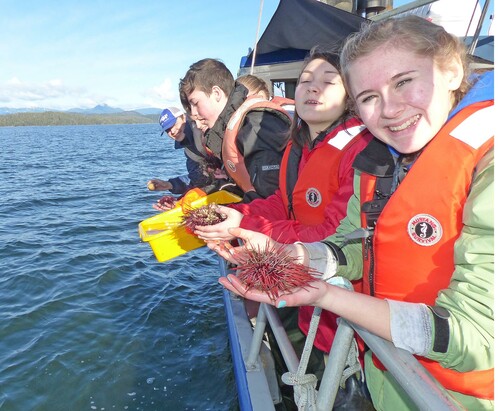
BRANT – Teaching marine sciences and trying to convey the diversity of life in the temperate rain forest can be a daunting task in the middle of land-locked Alberta. Brant Christian School answered the challenge by packing up the classroom, the students’ rubber boots and rain gear, and heading west.
Their quest for hands-on learning recently took 20 students and three chaperones to the west coast of Vancouver Island and the Bamfield Marine Sciences Centre. The week-long experience included tide pool explorations, lab research, ocean dredges, rainforest walks, and yes, rain.
“We all need to make time in our busy lives to fall in love with the wonder and mystery of life and the vast variety of creatures that inhabit this planet with us,” said science teacher Ken Kroeker. “What a wonderful way to be able to appreciate God’s creation in such an intimate way with a few of your best friends.”
He had previously accompanied students to Bamfield while teaching elsewhere, but this was the first trip to the not-for-profit sciences centre for Brant, a kindergarten to Grade 12 school in Vulcan County.
Located above the Pacific Rim National Park Reserve and west of Port Alberni, Bamfield Marine Sciences Centre is dedicated to education and research related to coastal marine sciences. It is a shared campus of the universities of Alberta, Calgary, Victoria, Simon Fraser and British Columbia.
During their visit, the Grades 9-12 Palliser Regional Schools students learned about marine and forest ecology, said Kroeker, which fits into the curriculum of diversity, biology and ecology units. Daily hikes covered off physical education.
The experience also offered many other, valuable lessons.
“They learned teamwork; numerous observational skills; using many types of instruments to record abiotic conditions; population ecology; resiliency and empathy on long, six- to 10-kilometre hikes over difficult terrain,” said Kroeker. “And how to exist without their electronic devices for hours, and even days.”
The group was greeted by a downpour upon their arrival but he said the students went enthusiastically into the deluge and explored what the low tide had to offer. When the sun came out, they ventured further to find different marine creatures and learn about a variety of invertebrates and vertebrates.
Nothing is better than hands-on learning, Kroeker said. One student was thrilled to check sea stars off their bucket list.
Another, he said, listed hiking to remote places like the West Coast Trail and seeing unique landscapes and beaches as her favourite part of the trip.
The students particularly enjoyed their time aboard the centre’s offshore vessel, the M/V Alta, which operates bottom trawls, dredges, and hydrographic and oceanographic instrumentation. They dredged up creatures like sea urchins, moon snails and sea cucumbers, which a student lovingly described as “super fun, nice and greasy and completely amazing.”
Their experiences ranged from skipping with bull kelp on the beach to standing beside giants of the forest more than 800-years-old. In their notes another student called the trip “absolutely incredible and I learned so many new things and had a lot of fun while doing it.”
The school group wrapped up its memorable trip by travelling from the sea to the sky for two days of skiing at the top of Mount Washington.
In the gallery below are some more images supplied by science teacher Ken Kroeker.


